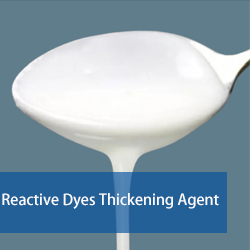Figure 1 Schematic diagram of the VCR method 1—supporting anchor; 2—rock drilling space; 3—transporting alley; 4—third blasting layer; 5— second blasting layer; 6—spherical drug pack; 7—first blasting layer; 8— lower horizontal layer; 9—mineral crossing lane; 10—receiving trench; 1 ) Stope layout According to the thickness of the ore body, the mining area can be arranged along the direction of the ore body and the vertical ore body. When the thickness of the ore body is above 20 m, the vertical ore body is generally arranged. The length of the mine is generally equal to the thickness of the ore body. The width of the mine depends on the stability of the rock: when the rock is stable, it is generally 10~15m or more; when the rock is not stable, it is 5-8m. The height of the stage depends on the stability of the rock and the effective rock drilling depth of the down-the-hole drilling rig , generally 40~60m. If the ore body thickness is less than 20m, the long side of the mine is arranged along the ore body, and the length depends on the stability of the rock. 2 ) Precision cutting The roadway 3 is transported in the tunneling stage of the surrounding rock, and the loading and unloading lane 9 is mined from the junction of the mine and the column at the stage roadway. The mine diaphragm and the V-shaped trench are excavated on the side of the mineway. 10, forming a pull level of 8. At the upper part of this stage, the rock drilling chamber is excavated and the rock drilling space is enlarged. 3 ) Recovery A deep hole drilling machine is used to drill parallel deep holes in the rock drilling space, and the bottom-up segment is charged and layered blasting. The effectiveness of the VCR blasting method is closely related to the quality of the blasthole. The slant slope is one of the main indicators for measuring the quality of the blasthole and must be strictly controlled. When the hole depth is 60m, the slope should be controlled within 1%. The explosive is in the form of a spherical drug pack. The caving ore falls to the bottom of the mine with its own weight, and is transported by the scraper through the v-shaped trench. Each time the mine is discharged, only about 40% of the collapsed amount is released. As the compensation space for the next layer of blasting, about 60% of the ore is retained in the stope to support the surrounding rock and the surrounding rock. . 4 ) Ventilation Ventilation during mining of the mine mainly ensures smooth air flow in the rock drilling space and the level of mining. Reactive Dyes Thickening Agent Water-based Paint Thickener, Reactive Dyes Printing Thickener, Silica Thickener,Liquid Thickener,Thickening Agent For Liquids Guangzhou Quanxu Technology Co Ltd , https://www.anticorrosionpigment.com
A reactive dye Thickening Agent is a substance used in the textile industry to enhance the viscosity of reactive dye solutions, making them easier to handle and apply. Reactive dyes are known for their high affinity to cellulose fibers, such as cotton, but they can sometimes be difficult to work with due to their low viscosity. The addition of a thickening agent helps to stabilize the dye solution, improving its flow properties.
There are various types of thickening agents that can be used depending on the specific requirements of the dyeing process:
1. **Cellulose Derivatives**: These include materials like carboxymethyl cellulose (CMC), hydroxypropyl methyl cellulose (HPMC), and others. They form a gel-like structure when dissolved in water, which increases the viscosity of the dye solution.
2. **Polyacrylates**: These are synthetic polymers that can be used to increase the viscosity of reactive dye solutions. They provide good stability and are often used in conjunction with other thickeners.
3. **Polysaccharides**: Natural polymers such as starch or xanthan gum can also serve as effective thickening agents in reactive dye solutions.
4. **Polyvinyl Alcohol (PVA)**: PVA is another synthetic polymer that can increase the viscosity of reactive dye solutions, making them more manageable during the dyeing process.
When using a thickening agent, it's important to consider factors such as the type of fiber being dyed, the desired level of viscosity, and any potential interactions between the thickener and other components of the dye bath. Proper dosing is crucial to achieve the optimal thickening effect without compromising the colorfastness or the overall quality of the finished product.
The mining method in the rock drilling stage, which is widely used at home and abroad, is the Vertical Crater Retreat Method (VCR method). The essence of the method is to use the underground down-the-hole drilling rig to drill the vertical or inclined deep hole to the bottom layer in the horizontal layer of rock drilling at the top of the mine, according to the optimal hole network rig , using high power, high density and high detonation speed. Low-sensitivity explosives ("three high and one low explosives") in a spheroidal package (the ratio of diameter to length is not more than 1:6) from bottom to top, stratified blasting in the lower bottom space, and high Efficient mining equipment (scraper) for ore shipments (Figure 1).